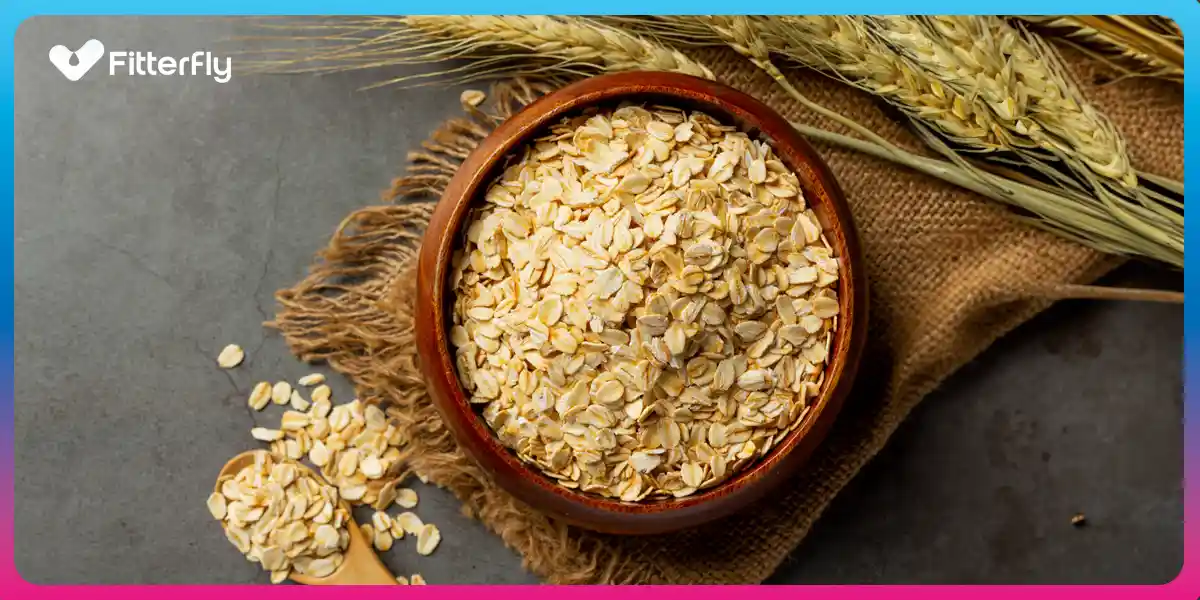Updating Diabetes Management: The Role of Personalised Glycaemic Response

According to a study by Lancet, India’s population with diabetes has surged to 101 million in 2023 from 70 million in 2019. Given this alarming rise, there’s an increasing need for advanced diabetes management techniques. One such method is based on Personalised Glycaemic Responses (PGR), which can be especially effective when traditional metrics like the glycemic and insulin indexes fall short.
PGR measures the variation in post-meal blood sugar levels between two individuals, even if they consume the same type and amount of food.
Significance of PGR in Diabetes Management
More physicians are now advocating for personalised glycaemic responses in medical nutrition therapy (MNT), leveraging data from continuous glucose monitoring (CGM) devices. This data-driven approach facilitates custom diet plans, ensuring optimal diabetes management and reducing long-term complications. Apart from blood sugar metrics, CGM devices also offer insights into essential parameters like time in range (TIR), time above range (TAR), and glucose management indicators (GMI).
How Does PGR Control the Progression of Comorbidities?
The postprandial glycemic response (PPG) symbolises changes in blood glucose levels after a meal, a modifiable risk factor for conditions like type 2 diabetes, fatty liver, and cardiovascular disease. Individual glycemic responses vary due to factors like insulin function, gut microbiome, fitness, gastroparesis, glucose transporter activity, lifestyle habits (smoking, alcohol), menstruation, stress, vitamin intake, medication, and genetics.
While traditional methods focus on food-induced glucose and insulin responses, they often falter due to unmeasured variables like dietary nutrient content, activity levels, and individual insulin sensitivity. In this situation, a good understanding of PGR is crucial for effectively managing blood glucose levels and preventing complications associated with diabetes in the long run.
Identifying Good and Bad Foods Through PGR
The primary advantage of implementing personalised glycaemic responses in diabetes management is the identification of personalised good and bad foods based on the postprandial glycaemic response of an individual. PGR works on the principle that the increase in blood sugar of an individual depends on the amount and type of carbohydrates consumed, the rate of digestion, and the individual’s insulin sensitivity, among many other bio-physiological variables. So, the same quantity or nature of the food (for example, 100 gm of rice) may not trigger the same spike in blood sugar in two individuals as all the above variables may not be the same.
People living with diabetes can identify the foods that help them maintain their blood sugar level within the standard range and also eliminate the food sources resulting in sudden spikes in glucose.
Determination of PGR via CGM Devices
For determining the PGR against a specific food source, a CGM device is first applied, preferably on the arm of the member. This device, which measures glucose every 15 minutes for 14 days, interfaces with sensors or apps to provide real-time readings. Users also maintain a food diary, allowing for a correlation between diet and glucose levels. Finally, the continuous stream of blood sugar data is correlated with the food to determine the PGR. Notably, the CGM readings for the first and last 24 hours are not considered while calculating PGR.
Predicting PGR of Foods
Combining CGM with a nutrition database and timed food diary makes it possible to predict personalised glycaemic responses to different foods and assist in diabetes management. Digital therapeutic platforms like Fitterfly also utilise CGM to create personalised lifestyle prescriptions. Understanding and utilising PGR has transformative potential in diabetes management and preventive healthcare. PGR data can revolutionise nutrition, exercise, and treatment by tailoring recommendations to individuals’ unique glucose responses. Early type 2 diabetes detection, digital tools, public health strategies, and research advancements are also anticipated.
Fitterfly Diabetes Prime: Flagship PGR-led DTx Program
Fitterfly presents a range of Diabetes Care and Weight Loss Programs, with its flagship offering being the CGM-based Diabetes Prime Program. It is a PGR-led digital therapeutics (DTx) program that strives to attain glycemic control and even attempt diabetic remission by providing customised medical nutrition therapy based on individuals’ PGR values. The unique DTx program is available for 3, 6 and 12-month time frames.
During the initial 14 days of the program, a CGM Sensor is applied to the member, and continuous glycaemic readings are recorded on our App along with data related to daily meals, activity, sleep quality and stress. Based on PGR and these observations, customised meal plans, exercise regimes and psychological support are recommended in the second phase- The Transform Phase. The final phase is aimed at sustaining the lifestyle modification introduced during the Transform Phase. Further modifications in diet plans and activities are also suggested in this phase.
Clinical Evidence Related to Fitterfly PGR Programs
Fitterfly recently conducted a real-world effectiveness study of its PGR-based Fitterfly Diabetes CGM program aimed to reduce the glycemic variability of members (Diabetes 20 June 2023; 72 (Supplement_1): 971–P). The study saw participation by 220 candidates with a mean age of 49 years. Members’ mean blood glucose (mg/dL), Time In Range (TIR), Time Above Range (TAR), Time Below range (TBR), glucose management indicator (GMI), and the percentage coefficient of variation for glucose (CV) were recorded during the first 14 days of the program. The main outcomes of the study include:
- Average median mean blood glucose decreased by 4.3 mg/dL from week-1 baseline of 130.4 mg/dl.
- TAR reduced by 2.5% from a baseline of 15.1%.
- TIR improved by 1.7% from a baseline of 77.7%.
- Median GMI reduced by 0.1% from a baseline of 6.4%
- CV reduced by 0.7% from a baseline of 26.9%.
- There was no significant change in TBR
Fitterfly carried out another effectiveness study on its PGR-focused program, published in the International Journal of Diabetes in Developing Countries volume 43, pages 425–4(2023). In this study, 64 T2DM candidates participated, and their CGM data was analysed for 7 days before and after the recommendation of the modified lifestyle plan. The outcomes of this study were:
- Median reduction in mean blood glucose was noticed from 139.5 mg/dL to 122.0 mg/dL
- TIR improved from 70.50% to 75.00%
- GMI improved from 6.64 % to 6.23%
- TAR reduced from 17.00% to 6.00%
- No significant increase in TBR was observed

Fig 1: Changes in CGM Metrics among participants of the personalised glycemic response-based Fitterfly Diabefly-Pro digital therapeutics program
The Future of PGR and CGM
Merging CGM data with nutritional databases can predict personalised glycaemic responses, paving the way for tailored diabetes management. Digital health platforms like Fitterfly are harnessing CGM data to draft individualised health plans. The potential of PGR is transformative, not just for diabetes management but for preventive healthcare at large. By understanding unique glucose responses, we can usher in a new era of personalized health strategies, early diabetes detection, and advanced research.
About Us
Fitterfly is on a mission to fuel the global metabolic health revolution through the power of Digital Therapeutics (DTx). We partner with physicians to deliver advanced customised digital therapeutics solutions aimed at enhancing the health outcomes of their patients.
By partnering with Fitterfly, you can save time in your clinics, ensure continuity of care for your patients, get research publications and also enhance your revenue. To know more, please fill out the form below or call us at 080-47093933.
This blog provides general information for educational and informational purposes only and shouldn't be seen as professional advice.
Want to know how can Fitterfly enhance your practice and improve patient outcomes?





















